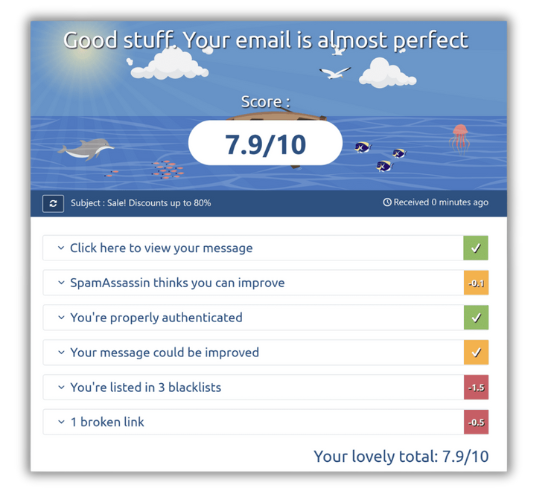Why Are My Emails Going to Spam?
After spending hours crafting the perfect email, you’d like your contacts to read it, right? Unfortunately, one of the most frustrating situations is finding out your email landed in the spam folder. Possibly even more frustrating is finding out why.
There’s no certain way of knowing how many of your emails landed in the spam folder. While a helpful business relationship will notify you if your emails are being marked as spam, this becomes even trickier for marketing emails.
Why does this happen?
More than half of all emails are spam. Because of this overwhelming number, email services have become increasingly more aggressive in combating it.
Most of the emails marked as spam are spam, but while email services protect their users, legitimate emails will sometimes mistakenly get mixed into the bad actors.
In the first section, we’ll discuss how you can get an idea of whether your emails are landing in the spam folder. Later on, we’ll share some tips on how to boost your deliverability.
How to test where your emails are going.
If you’re worried about your emails being blocked by spam filters, a third-party tool such as mail-tester.com will give you instrumental insight.
Simply send your email to a test email they provide. The tool will then give you a spam score and provide you with several factors they consider, showing how you scored on each individually.
For example, Mail Tester will let you know if your domain was found on blacklists, whether you’re not fully authenticated, or whether your email contains broken links.
Even if one email hits the inbox flawlessly, this doesn’t mean the next will. Email deliverability can vary depending on the frequency you are sending and the content of each email.
For the most accurate results, send the same mail you would to recipients to Mail Tester using the same sending method. This way, the tool can properly assess whether your content might cause any red flags.
Alternatively, you can create several email accounts under different names and sign up for your newsletter.
Make sure you don’t use email accounts with the same domain as your sending domain, as these results will not be representative of your list.
Tips for improving your deliverability:
1. Set up proper authentication.
Mailbox providers are putting more weight on your account's security setup and your overall sending reputation rather than the content of your email, as spam filters relying only on content filters would cause too many false positives.
If you’re using a custom domain, one of the easiest ways to improve your sender reputation is by setting up proper email authentication with methods like DKIM and SPF, this acts as a badge to show that your account is safe and secure.
You can set these authentication methods up by adding TXT records in your domain’s DNS management. The TXT values will depend on what email service you use, but your provider will want you to set these up, so you’ll be prompted many times with the information you need.
2. Maintain your list.
If your contacts are barely engaging with you, it sends a bad message to mailbox providers about the quality of your content. Poor engagement can indicate you’ve bought your list rather than organically growing it or that you’re sending irrelevant content to your readers.
Periodically remove or “sunset” inactive contacts.
Make sure you only email contacts that have explicitly opted in.
Give contacts a straightforward way to unsubscribe.
3. Follow email design best practices.
While content isn’t the only factor that plays a role in identifying spam anymore, following best practices will affect other factors such as the quality of your emails, user engagement, and unsubscribe rates.
Common pointers
Don’t just rely on images. A healthy text-to-image ratio is about 80:20.
Don’t use "spammy" words or too many emojis.
Make sure to add accurate sender information, such as your company name and address.
Only link to reputable sites and avoid linking to low-quality URLs.
Don’t send files directly attached to the mail but host them on a third-party platform.
A great idea is to ask subscribers to whitelist your email-sending domains! This will guarantee your emails will land in their inbox, although it’s no guarantee that all of your contacts will go through the extra effort and do you that favor.
If you plan to ask your contacts to whitelist you, it can be helpful to link them to a page on your website that shows the process, and not assume that they will understand what you’re requesting.
Following best practices, your sender reputation will continue to grow, and your worries about landing in spam will be a thing of the past. Usually, the most impactful step you can take is properly authenticating your emails but keeping your list clean and providing quality content are necessary regardless of whether you’re landing in spam.
Eliminate these worries by signing up for a free trial of AllClients.


